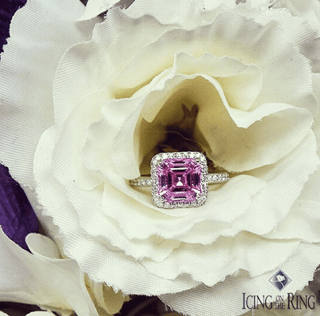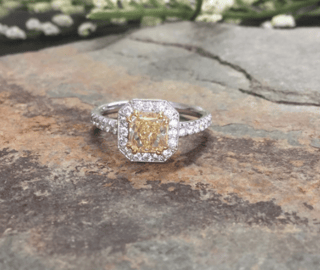For anyone who knows their 4Cs in diamond buying, it is understood that colorless diamonds or those with very little color are the most valuable. Naturally colored diamonds, however, possess a rarity all their own that is measured by color intensity and distribution, - the more intense the color, the more valuable the diamond.
The color of a naturally colored diamond can vary, but yellow, pink and blue are the colors most commonly associated with engagement rings, although, black and brown diamonds have made serious statements in bridal jewelry as well.

It may seem obvious, but color will be the first consideration when choosing a colored diamond. Colored diamonds don’t necessarily fall on the D to Z color grading scale that applies to white diamonds. A deeply saturated or richer colored diamond is the most valuable, but not necessarily the most sought after when it comes to engagement ring taste.
After color, it’s the carat weight of a colored diamond that makes it far more expensive than other diamonds, mainly because larger gems occur less often in nature. Therefore, a larger colored diamond will cost more than a smaller one.

Clarity is not as important of a factor in color diamond quality as it is for colorless diamonds and inclusions don’t detract from the diamond’s beauty. Cut, on the other hand, is important because the cut should emphasize color rather than brilliance. Often times, non-traditional or fancy shapes are used to better enhance the diamond’s natural color.
Finally, setting the diamond in an appropriate metal is as important as picking the diamond. The metal should bring out the natural color of the diamond.
Interested in a colored diamond? Speak with one of our expert gemologists today.
CUSTOMER CARE
ABOUT US
OUR SHOWROOM
Contact Us


All prices are in USD